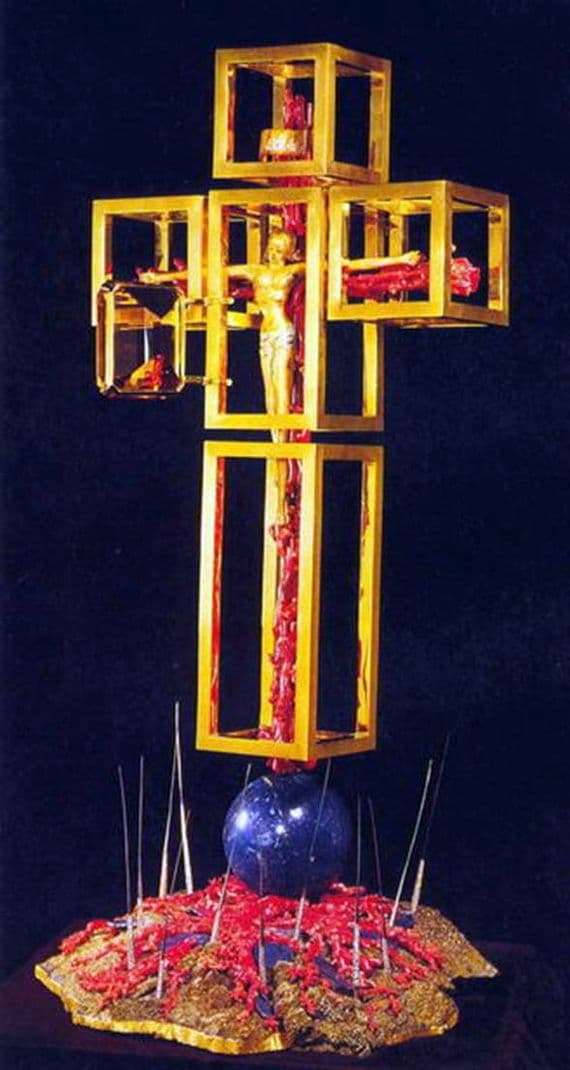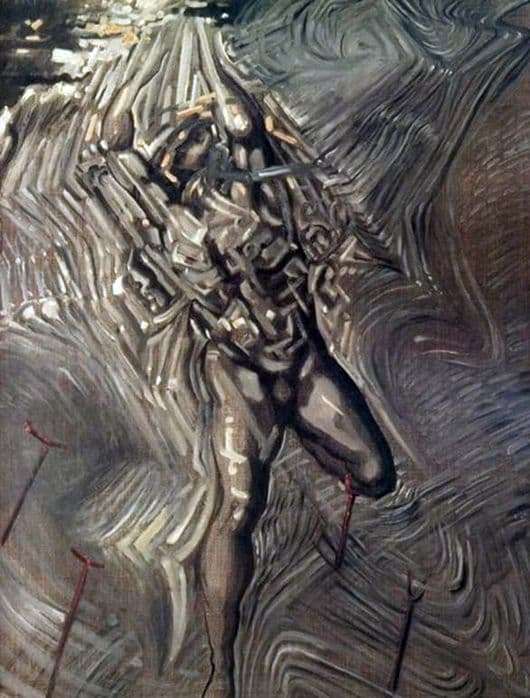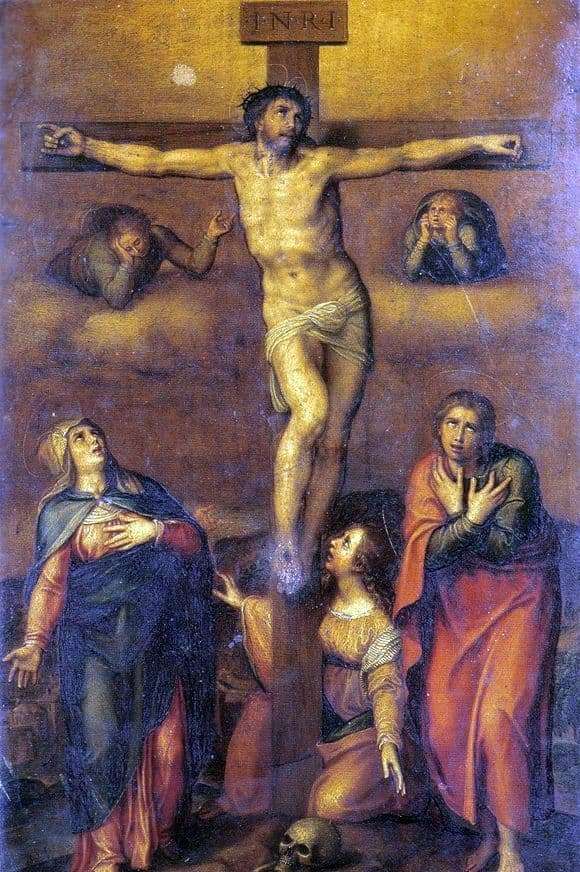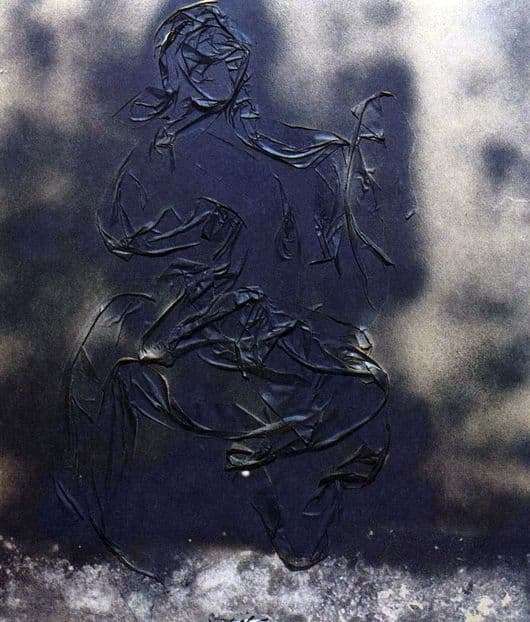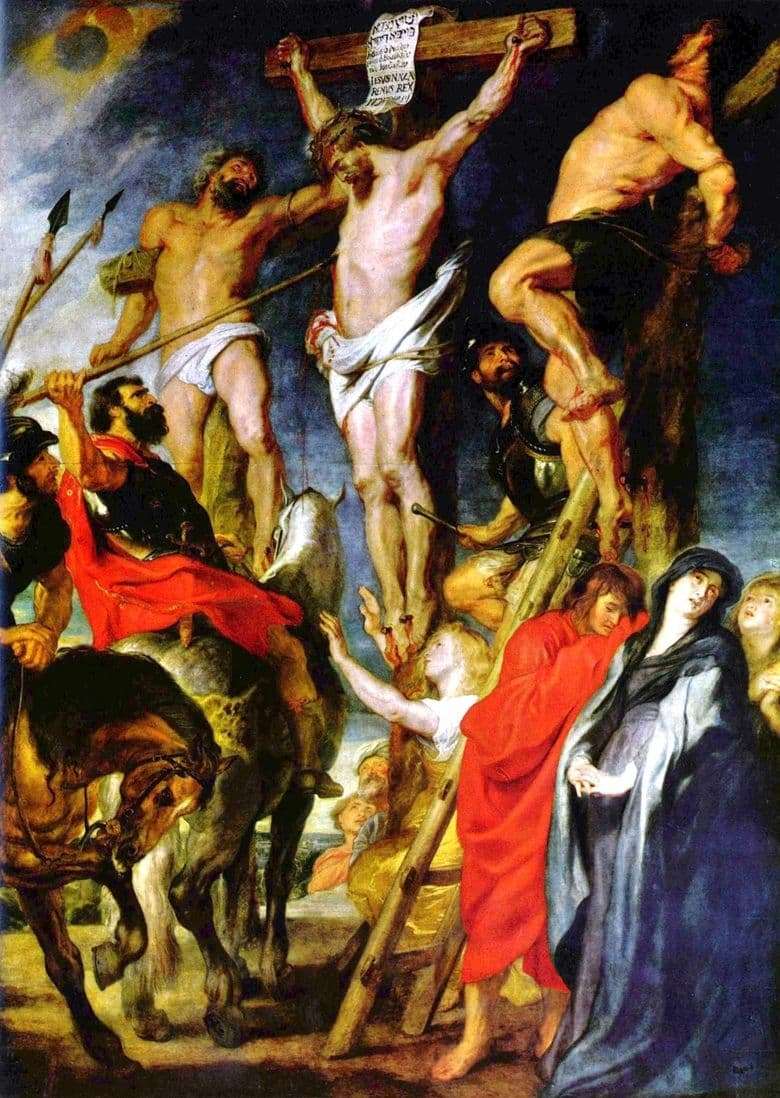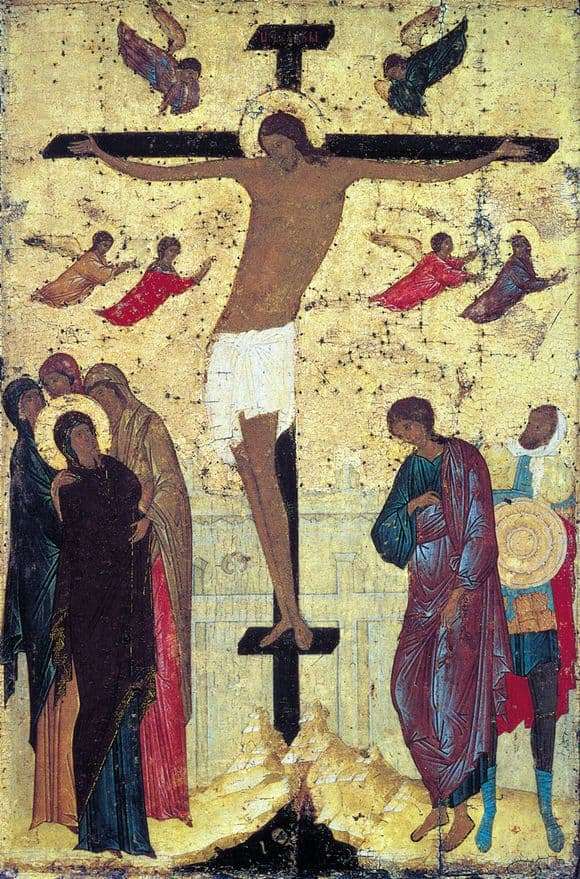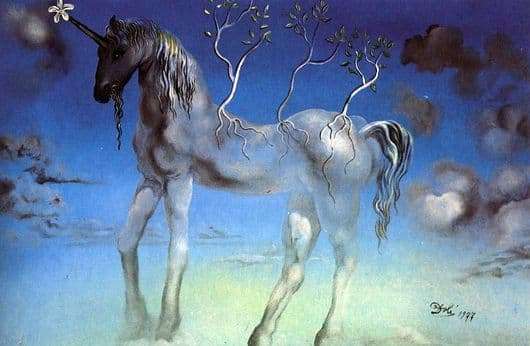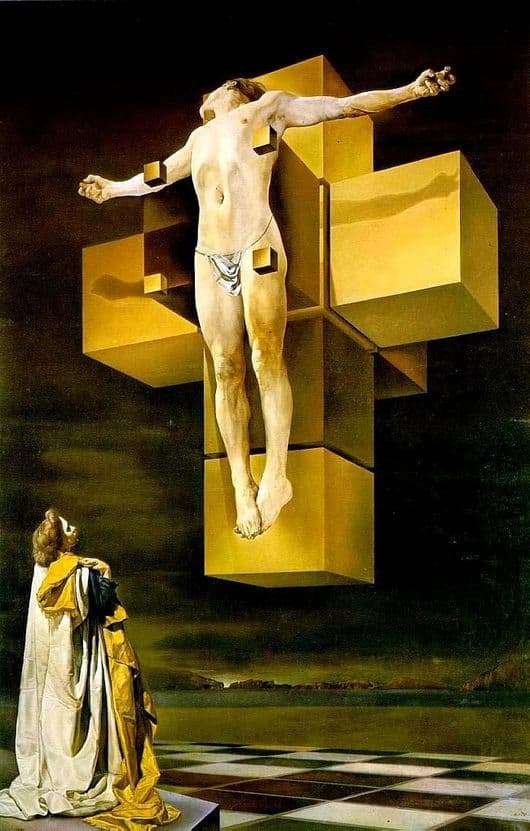
Salvador Dali embodied the embodiment of the Spanish temperament, extraordinary thinking and a peculiar vision of the world in many of his canvases.
The great surrealist of the 20th century, Salvador Dali, in his Crucifixion canvas depicted one of the most famous religious scenes – the crucifixion of Jesus Christ. His images, embodied in the pictures, are a reflection of his dreams and visions. One such idea was the representation of a cross for a crucifix in the shape of a hypercube. The form of the body of Jesus underlines his sufferings – his head is tilted back, his legs stretched to a string, his chest arched. All the muscles of his body as if pierced by a charge of current, they are extremely tense. The same tension permeates the whole picture and is transmitted to the viewer.
The geometric shape of the cube with its clear edges and corners emphasizes the suffering of Jesus Christ, their infinity and its hopelessness. The perfect geometric body of the cube seems to correspond to the perfect human body of Christ.
The body of Jesus looks healthy and young. Dali portrayed the reference beauty of the male body in the image of Christ. He does not look thin or haggard, his body is full of vitality, but Jesus is doomed to a painful and long death, full of suffering and pain.
In religious sources, the posture of Jesus on crucifixion does not express tension – the body of Christ is relaxed, he is wilted on the cross, his arms and legs hang loosely.
From the picture blows cold. The external situation contributes a lot to this – the cross is located freely in space. It is as if Jesus is hanging in the air – at the same time he is chained to the hypercube.
The image of Jesus Christ on the Dali canvas is the embodiment of the heartlessness of the world, its cruelty and hatred. Jesus is bound between cubes – his back is leaning against the cross, from the side of the chest four cubes of small size personify nails.
Description of the painting by Salvador Dali “Crucifixion”
